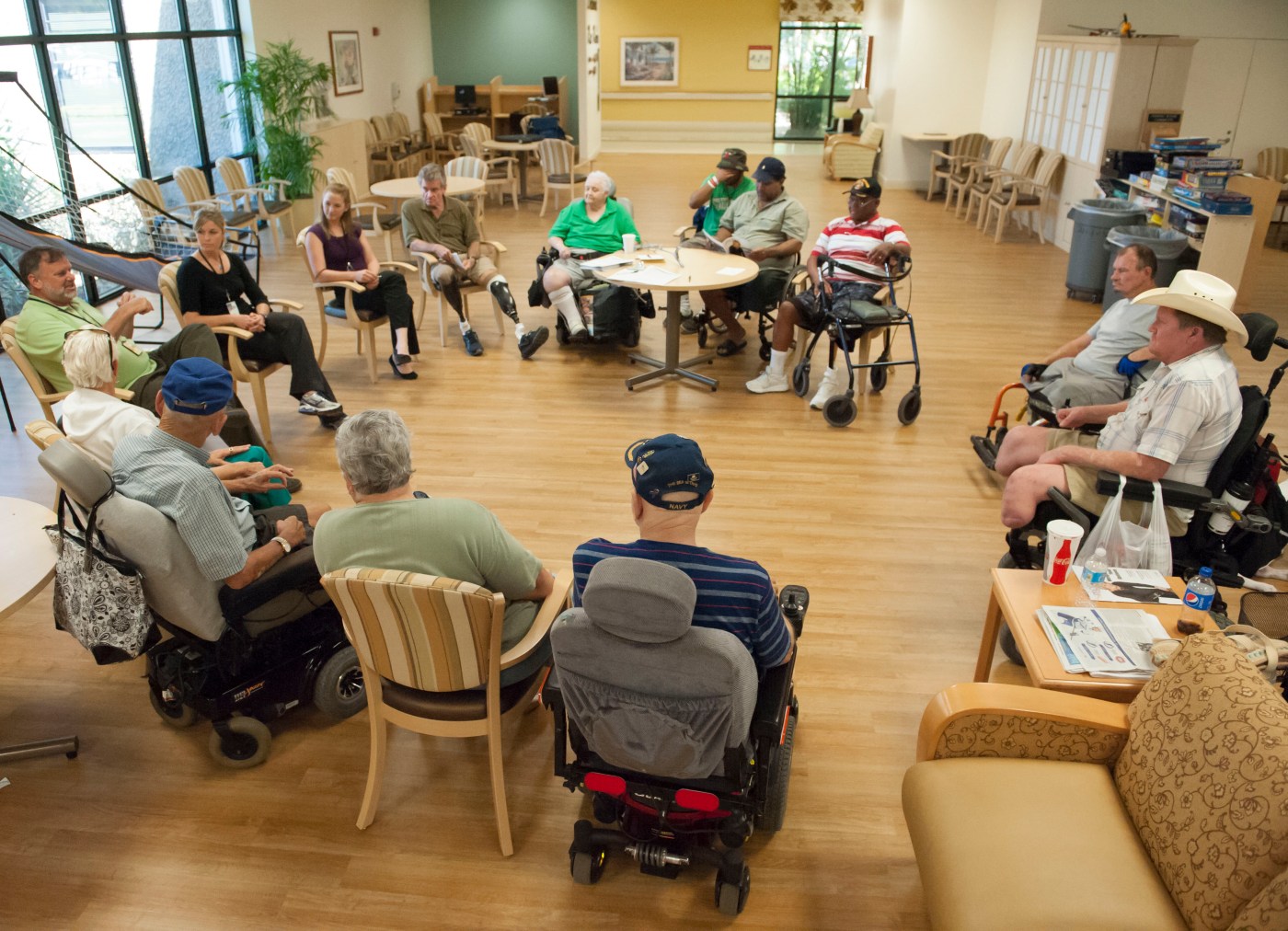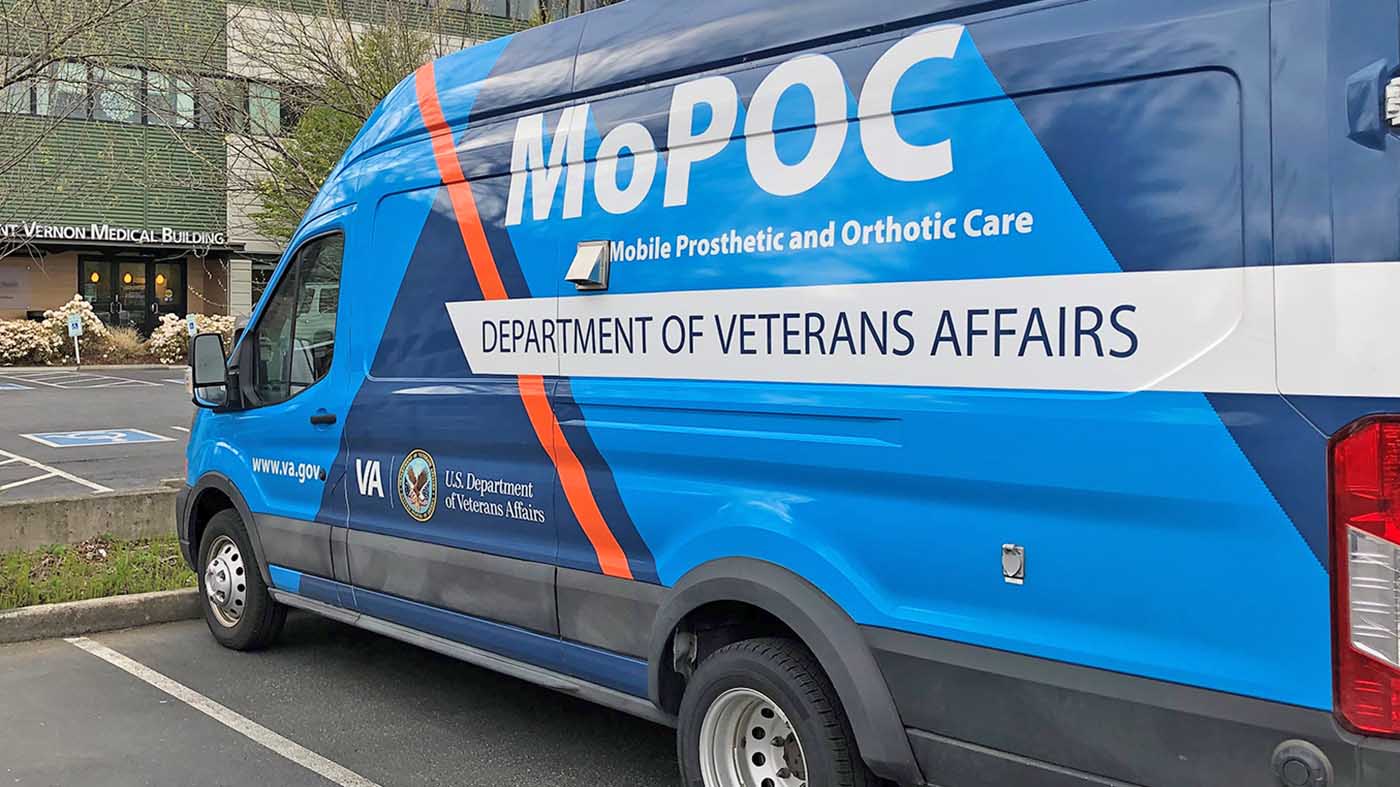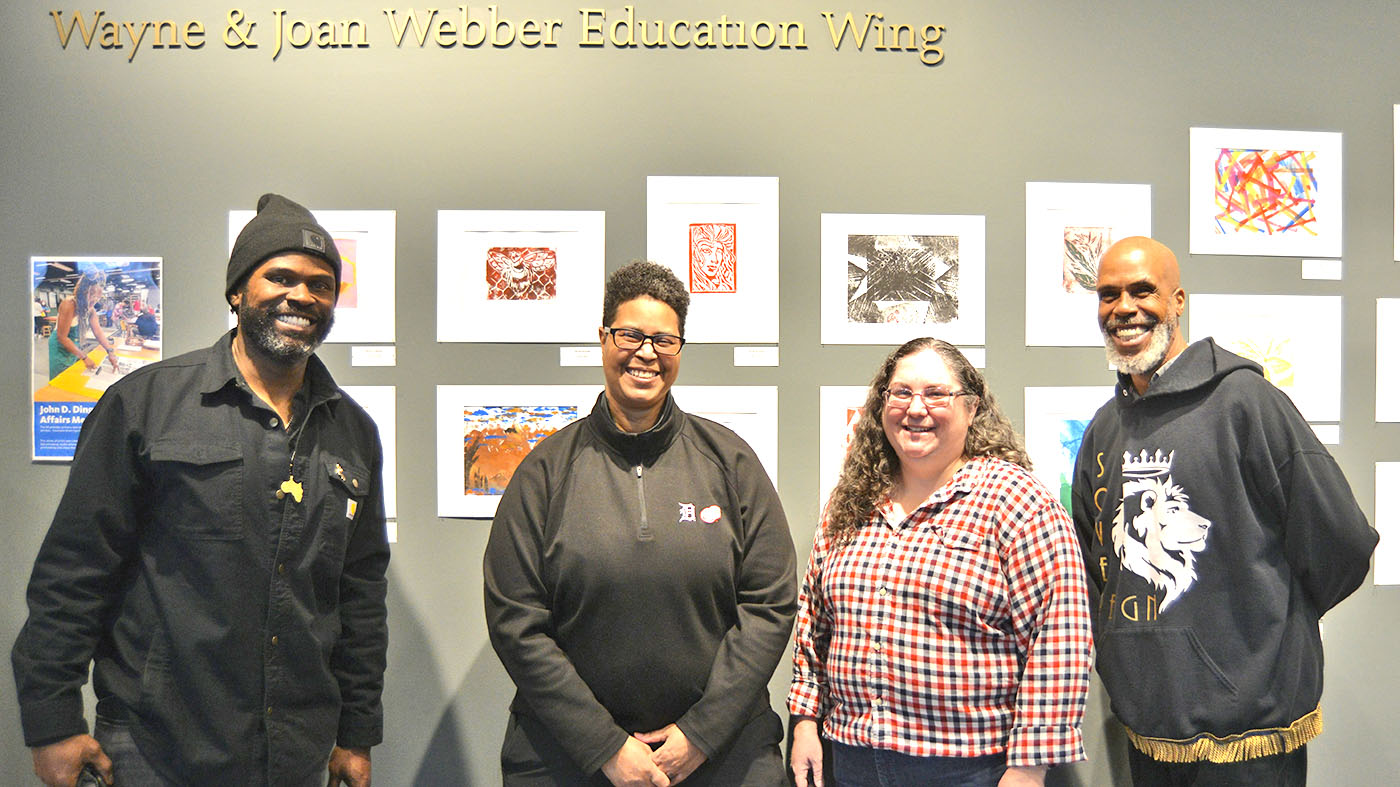Two arms, two legs, 10 fingers and 10 toes, are physical attributes that most people take for granted. Whether walking up and down stairs, taking a light morning jog, typing on a keyboard or simply getting out of bed and walking to the kitchen, these daily functions, for most people, are seamless. For those missing one or more of these body parts, life can prove top be more challenging.
Meet the Bay Pines VA Healthcare System’s Veteran amputee support group – a small, family-like assemblage of Veterans who meet in a small rehab wing located in the Community Living Center (CLC) at the C.W. Bill Young VA Medical Center.
The Veterans who currently attend the monthly meetings have single or double leg amputations – some above the knee and some below. The group’s focus is not to talk about their physical abilities that many of the members enjoyed in the past; rather they share experiences, explore resources and learn how to make the best of their lives today and in the future. The group’s activities are not limited to the CLC. Routinely members of the group participate in recovery-based recreational activities hosted by VA and community partners like fishing, sailing, adaptive sports and more.
Bob Schum, a 73-year-old U.S. Navy Veteran from Largo, Fla. is a self-described “old timer” and “elder statesman” of the group. He has been attending meetings for the last two years. Bob became a member of the group while still admitted to the hospital following a left leg amputation below the knee due to diabetes complications in October 2012.
Bob said he was as prepared as anyone could be when his doctor informed him that he would need to undergo a surgical procedure that would leave him with only one leg, but, he said, for others amputation takes a severe physical and emotional toll.

The most difficult part of amputation, Bob said, was the healing process, which, in his case, took about a year. That did not stop him from participating in the 2013 National Veterans Wheelchair Games in Tampa where he took home a gold medal in bowling. After about 18 months of healing and rehab, Bob was fitted for a prosthetic leg which he now uses every day.
According to Dr. Sara Dodrill, the physical therapist responsible for administering and facilitating the group, recovery from an amputation is different for everyone.
“The physical and psychological impact of an amputation varies from person to person,” Dodrill said. “Some individuals do very well with amputation, while others actually go through some form of the grieving process, very similar to losing a loved one, and need a lot of support.”
Dodrill said that circumstances surrounding amputation also impacts recovery. Veterans who experience a combat related amputation, for example, may cope much differently than a patient with a chronic disease process like diabetes.
“Veterans with diabetes are usually informed and understand if they are at risk for amputation. These patients are typically more prepared for the surgery and subsequent lifestyle changes that will be required following amputation. Veterans who lose a limb due to a combat related injury do not have this same level of preparedness, and amputation could come as a shock and can be very hard to deal with psychologically,” she said.
Dodrill said Veterans with diabetes or peripheral vascular disease often deal with medical issues related to their legs for months, even years leading up to an amputation. With the right education and support, these individuals have the potential to be prepared for the surgery and subsequent lifestyle changes that will be required following amputation. In contrast, veterans who lose a limb due to a combat related injury or trauma do not have this same level of preparedness, and may have a very different physical and psychological recovery process.
Because the vast majority of amputations are related to chronic diseases like diabetes, Dodrill also oversees the PAVE — or Prevention of Amputation in Veterans Everywhere — program. The program focuses on education and wellness practices to decrease the risk of amputation.
Regardless of how an amputation occurs, Dodrill said the amputee support group is designed for any Veteran that feels he or she may benefit in a group setting. Family members and friends are also welcome to attend sessions with their loved ones like Bob’s wife Carolyn who never misses a meeting and a chance to support her husband and others in the group.
“I have become the group’s biggest advocate and cheerleader,” Carolyn said. “I take it upon myself to pep the guys up. I truly believe that if it wasn’t for this group, many of them wouldn’t make it.”
Carolyn and Bob celebrated their 51st wedding anniversary on March 21. Just like their special day and commitment to each other so many years ago, they have dedicated the same level of love and support to the Bay Pines amputee support group family.
“We are very much a family,” Bob said. We are all here for each other and share the same affliction. Our collective strength helps us bond, heal and do things we thought were impossible.”
“There were a lot of people, including myself, that never thought I would walk again. Today, I can say, they were wrong – I was wrong,” Bob said. “I walk proudly with a prosthetic leg, and have the support of my brothers, the great folks at the VA and most importantly, the love of my life. I wouldn’t be here today without them.”
Topics in this story
More Stories
Mobile care teams expand access to specialty orthotic and prosthetic care for rural Veterans.
Art therapy program partners with Detroit Institute of Arts, which displays participating Veterans’ art.
Register for Sports4Vets 2025 events. Application windows have either already opened or will soon.







Hi, This is really good program for old people. In Turkey not like that.